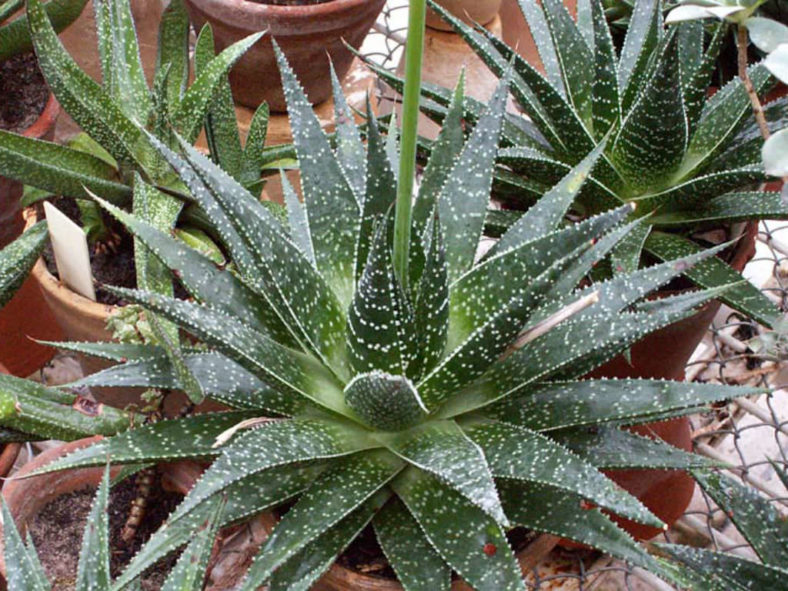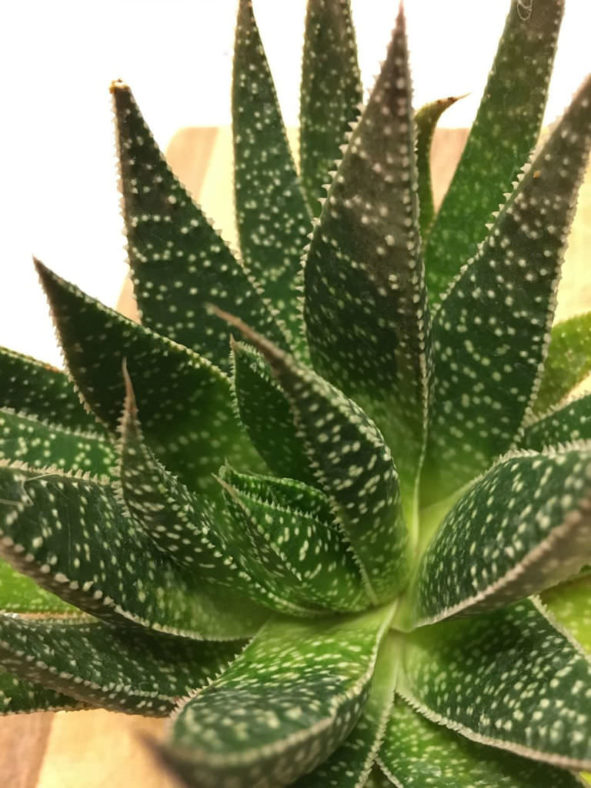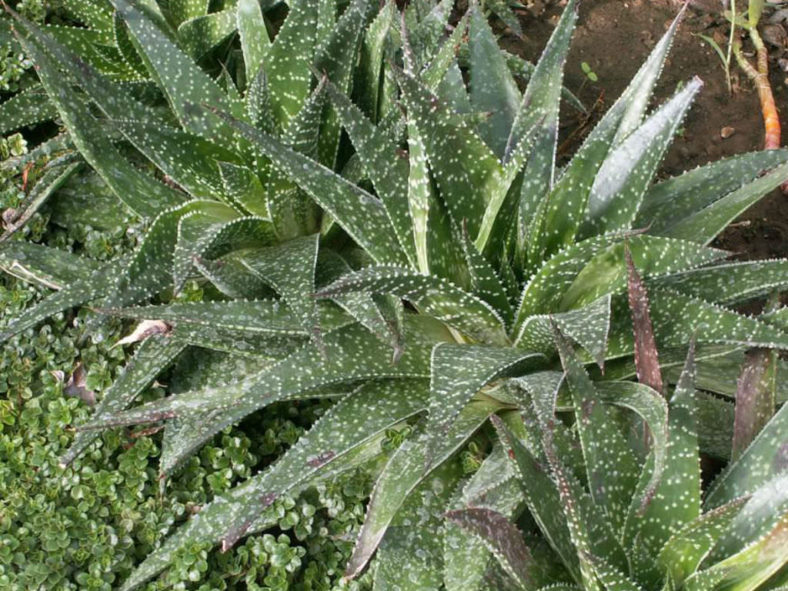Scientific Name
×Gasteraloe beguinii (Radl) Guillaumin
Common Name(s)
Lizard Tail, Pearl Aloe
Synonym(s)
Aloe × beguinii, ×Aristeria beguinii , ×Gastrolea beguinii
Scientific Classification
Family: Asphodelaceae
Subfamily: Asphodeloideae
Nothogenus: ×Gasteraloe
Etymology
The specific epithet "beguinii" (pronounced "be-GIN-ee-eye") honors Jules Béguin (1834–1912), a French priest from Brignoles who was passionate about cultivating and hybridizing Aloe and related genera.
Origin
×Gasteraloe beguinii is a hybrid that results from a cross between Gasteria carinata var. verrucosa and Aristaloe aristata (formerly known as Aloe aristata).
Description
×Gasteraloe beguinii is a slow-growing succulent that forms rosettes of lance-shaped leaves, which can range in color from dark green to reddish and are adorned with tiny, white tubercles. The rosettes typically grow solitary or may slowly produce offsets, reaching a diameter of 10 inches (25 cm).
This hybrid blooms at the same time as Aristaloe aristata. Its flowers are the same color as those of Aloe aristata. They have dark tips but no faint lines or basal swelling.

Hardiness
USDA hardiness zone 9b to 11b: from 25°F (-3.9°C) to 50°F (10°C).
How to Grow and Care
Gasterias are often grouped with Haworthia because the plants have similar cultural requirements. Both are attractive, small succulents that can tolerate somewhat more shade than many succulents, making them more suitable as houseplants. Gasterias are susceptible to fungal infections, which usually appear as black spots on the leaves. These result from too much humidity or water on the leaves, but they should not spread too quickly. Gasterias have a natural defense mechanism against fungal attacks, such as attacking the invading organism and sealing off the wounded spot. Generally, any place where Haworthia and Aloe thrive will be hospitable to a Gasteria.
Gasterias are small, shallow-rooted, and relatively slow-growing. Therefore, they are often grown in small clusters in wide, shallow dishes. Over time, clusters will naturally enlarge as the mother plant sends off small plantlets.
See more at How to Grow and Care for Gasteria.
Links
- Back to nothogenus ×Gasteraloe
- Succupedia: Browse succulents by Scientific Name, Common Name, Genus, Family, USDA Hardiness Zone, Origin, or cacti by Genus
Photo Gallery
Click on a photo to see a larger version.

